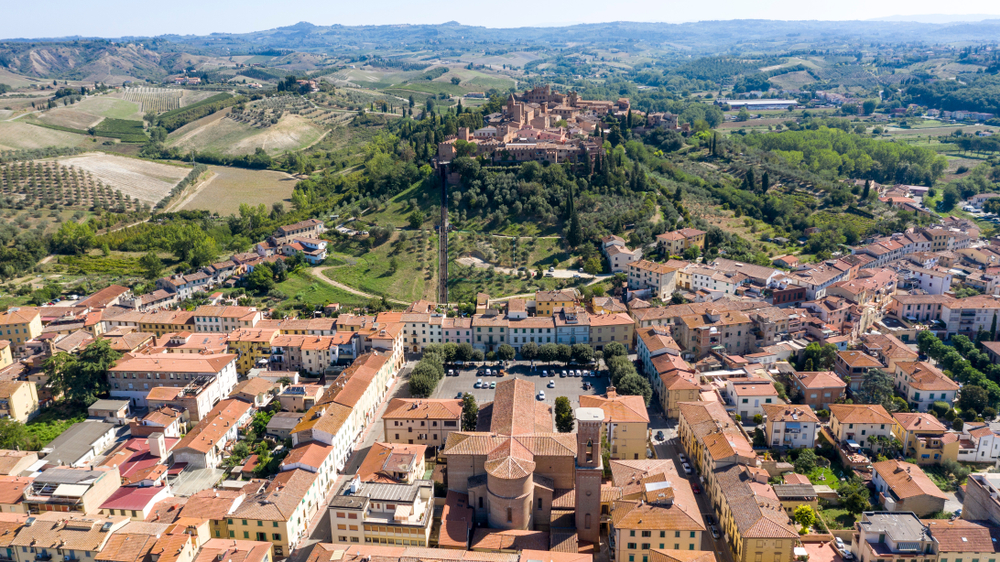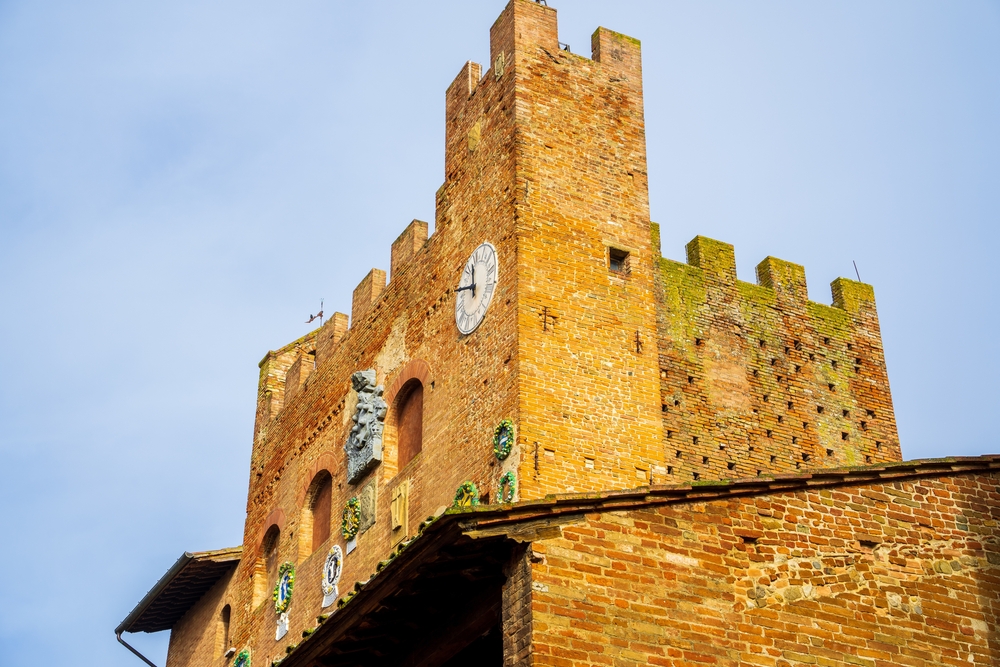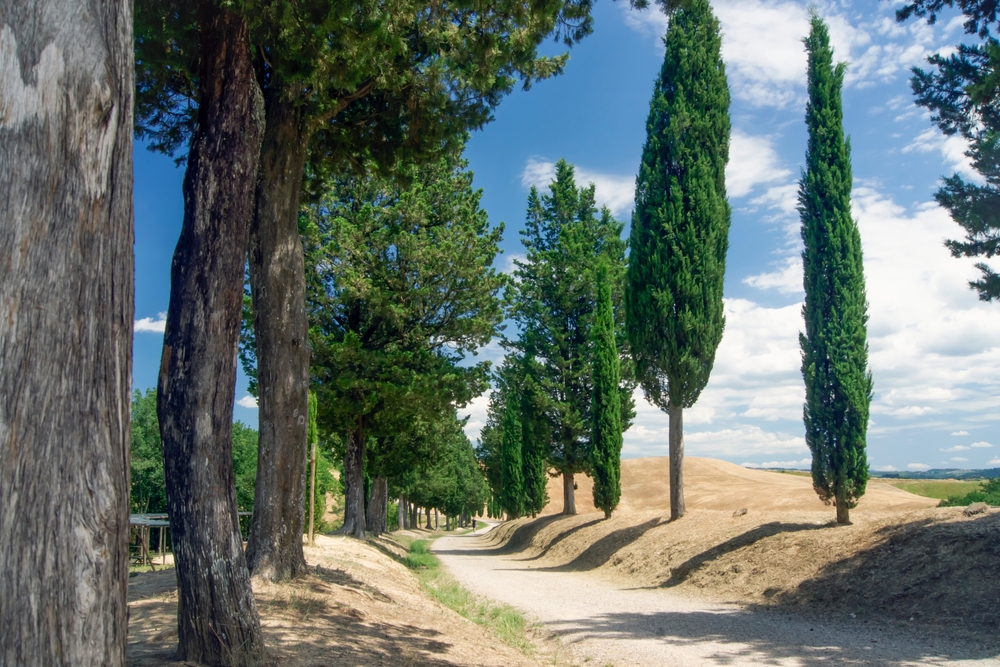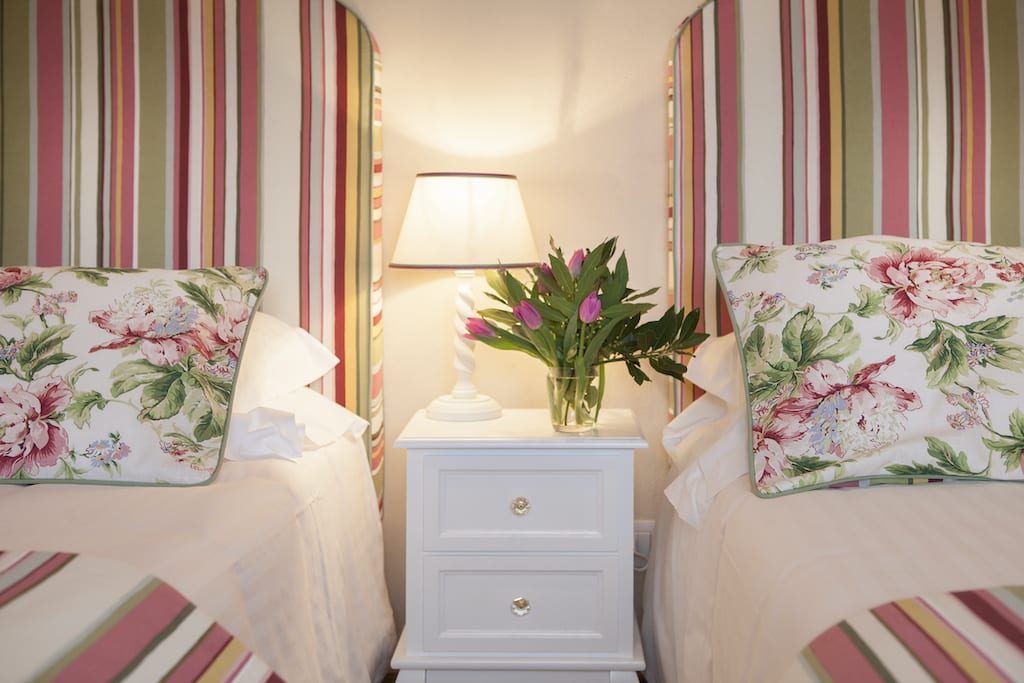Guide to Certaldo, Tuscany: Certaldo travel guide
Certaldo is situated 46 km south west of Florence, 80 km south east of Pisa, 13 km north of San Gimignano and 45 km north west of Siena in the heart of the Val d’Elsa. This charming and rather beautiful hilltop town in Tuscany has origins that go as far back as the Romans and Etruscans, Certainly the name Certaldo derives from the Latin cerrus altus, referring to the oak-covered hill on which the town sits. However what visitors see today predominantly dates from the second half of the twelth century and the Emperor Federico Barbarossa. We hope you enjoy our guide to Certaldo.
What to see and do in Certaldo
Certaldo is split into two main areas – Certaldo Bassa (the lower and newer part of town) and Certaldo Alta or Certaldo Castello (the upper, medieval centre). It’s the latter where we recommend you spend most of your visit. It can be reached by foot from the lower part of the town via one of three streets – the ancient Costa Alberti and the Costa Vecchia or the more modern Via del Castello.

Alternatively, the two areas are also connected by a funicular that starts from the Piazza Boccaccio, saving your legs from having to make the steep climb up the hillside. The funicular runs every 15 minutes and the journey only takes just over a minute. Please note that car access to Certaldo Alto is restricted to residents only.
Certaldo Alto is accessed via one of three ancient gates which provide access through the huge defensive walls – Porta Alberti, Porta al Sole and Porta al Rivellino. Each of the gates is interesting. The Porta al Rivellino is located at the end of a street bearing the same name. This is the oldest road up to Certaldo Castello and it is widely agreed that it is also the most picturesque. The Porta Alberti dates back to the 14th century and comprises a slender Gothic arch. And then the Porta al Sole is the main gate and is decorated with the coat of arms of the Medici family.
Whichever gate you choose to use, it will lead you to the main street in Certaldo Alto – the Via Boccaccio. Walk up this road and it will lead you to the very top of the hill from where you can enjoy fabulous views over the surrounding countryside. Interestingly, Certaldo has no main square unlike most Medieval villages so this main street essentially serves the purpose that a main square in Italy normally would.
Once inside the walls, we recommend you make the time to slowly explore the Medieval streets, imposing palazzi and small piazzas of Certaldo. The most important of these palazzi is the Palazzo Pretorio. This twelth century palace was built on the ruins of the original family home and residence of the Alberti family. This family aggressively procured land that stretched from the Apennines to the south of Siena and their behaviour put them in constant battles with the Florentines. However, in the 14th century, the Alberti were finally defeated once and for all by Florence. A long succession of Vicari followed. In the 370 years after 1415, there were 707 different Vicari!

Visitors to the palace today can admire some beautiful 15th and 16th century frescoes inside the building as well as marvel at the many coats of arms that adorn its façade. Each of these represents the family of each Vicari that ruled the city. Many of these coats of arms were sculpted by the della Robbia family. The prisons, court, chapel and private accommodation of these Vicari can also be explored.
Another palace in Certaldo is the Renaissance Palazzo Stiozzi Ridolfi. Whlst not as striking as the Palazzo Pretorio, its two towers overlooking Costa Alberti and Via Boccaccio are nevertheless impressive!
Adjacent to the Palazzo Pretorio is the Church of San Tommaso and Prospero. This dates from the 13th century and is the oldest church in Certaldo. Whilst some of the original frescos were removed, it is still home to the Tabernacle of the Condemned Prisoners by Benozzo Gozzoli and Giusto d’Andrea.
Another church in Certaldo worth visiting is the Church of SS Jacopo and Filippo. This can be found between the Palazzo Pretorio and the House of Boccaccio. It is also the entrance of the Museum of Sacred Art which is found in a 15th century Augustinian convent. It’s home to a number of paintings from the 12th to 16th centuries including religious artworks by Ugolino di Nerio, Meliore di Jacopo and Cenni di Francesco di Ser Cenni. Before you leave the convent, we also recommend you visit the Hortus Conclusus, a typical convent garden where a plethora of aromatic and healing plants thrive.
Finally, another museum worth a visit is the House of Boccaccio. Certaldo was the birthplace of Giovanni Boccaccio. He was born here in 1313 and was buried here in 1375. Giovanni Boccaccio was an illustrious poet and one of the fathers of Italian language and literature. He was also the author of the Decameron, acknowledged as an Italian masterpiece and written between 1349 and 1351. Visitors can visit the house where he spent the last few years of his life and can admire the statue erected to commemorate him in 1875. A library within the building contains a number of illustrated copies of the Decameron. Sadly, the building sustained considerable damage during WWII, so much of what you see is a post war reconstruction. However, inside there are a plethora of items belonging to Boccaccio, including furnishings. In the Poet’s Room (Stanza della Poeta), visitors will also have the opportunity to admire a fresco by Pietro Benvenuti. This was commissioned by Carlotta Lenzoni dei Medici in 1826 and depicts Boccaccio busy at his desk. Even if you’re not particularly interested in the life and work of Boccaccio, we’d still recommend a visit here. Entrance is cheap and the views from the top of the tower are stunning.

If visiting Certaldo, you may also want to head just outside the town along the road that leads towards Castelfiorentino and Empoli where you will find the hilltop Canonica Park. This is a lovely green area with plenty of walking trails and lots to entertain the whole family with play equipment, picnic tables and a BBQ area. Rows of cypress trees create a picture postcard setting and the views from here of the surrounding area are sublime. Also nearby is a River Park where you can walk along the banks of the River Elsa.
Just one word of advice – if you do decide to visit Certaldo during your Tuscany vacation, then we recommend you avoid visiting on a Monday as you will find many shops and restaurants closed. The town’s museums also close on a Monday.
Events in Certaldo
Certaldo punches above its weight when it comes to festivals and events. The first event of the year in Certaldo is the Sagra di Tartufi (truffle festival) in March. In June, a Medieval dinner is hosted in the streets of Certaldo honouring its most famous resident – Boccaccio. If visiting in July, it’s definitely worth trying to time your visit to coincide with the International Street Art festival – Mercantia – that takes place each Summer. This is an incredible spectacle with around 80 different shows each day and numerous stalls selling arts and crafts. Each year is completely unique and it’s a wonderful event to be a part of. Or visit in the Autumn. In September, the Festa di Beata Giulia takes place across a five day period. And in October, you’ll be able to experience the Boccaccesca, an annual food and wine festival that revolves around food with street vendors selling local products and open air cooking lessons taking place. The event is named after Certaldo’s most famous resident and author – Boccaccio.
Where to stay in Certaldo
This luxury Tuscany villa is situated just a 25 minute drive from the heart of Certaldo. It can sleep up to 12 guests in 6 bedrooms and offers guests a wonderfully relaxing base to explore Tuscany with a private pool and wellness suite to enjoy.

How to get to Certaldo
By car: Certaldo is easy to reach by car and is well signposted. If coming from the east or west, take the FI-PI-LI road and follow the SS 429 towards Siena and Certaldo. If coming from either the north or south, then exit the road between Florence and Siena at Poggibonsi and again follow the SS 429 towards Empoli and Certaldo. There is ample parking in Certaldo.
By train: Certaldo Basso has a railway station with regular direct trains to and from Florence and Siena.
By bus: A bus service goes regularly from Certaldo Basso to San Gimignano.
By air: The nearest airports are Florence (40 km) and Pisa (75 km).
We hope this guide to Certaldo has been useful but please do ask us at Bookings For You if you need any more information.


